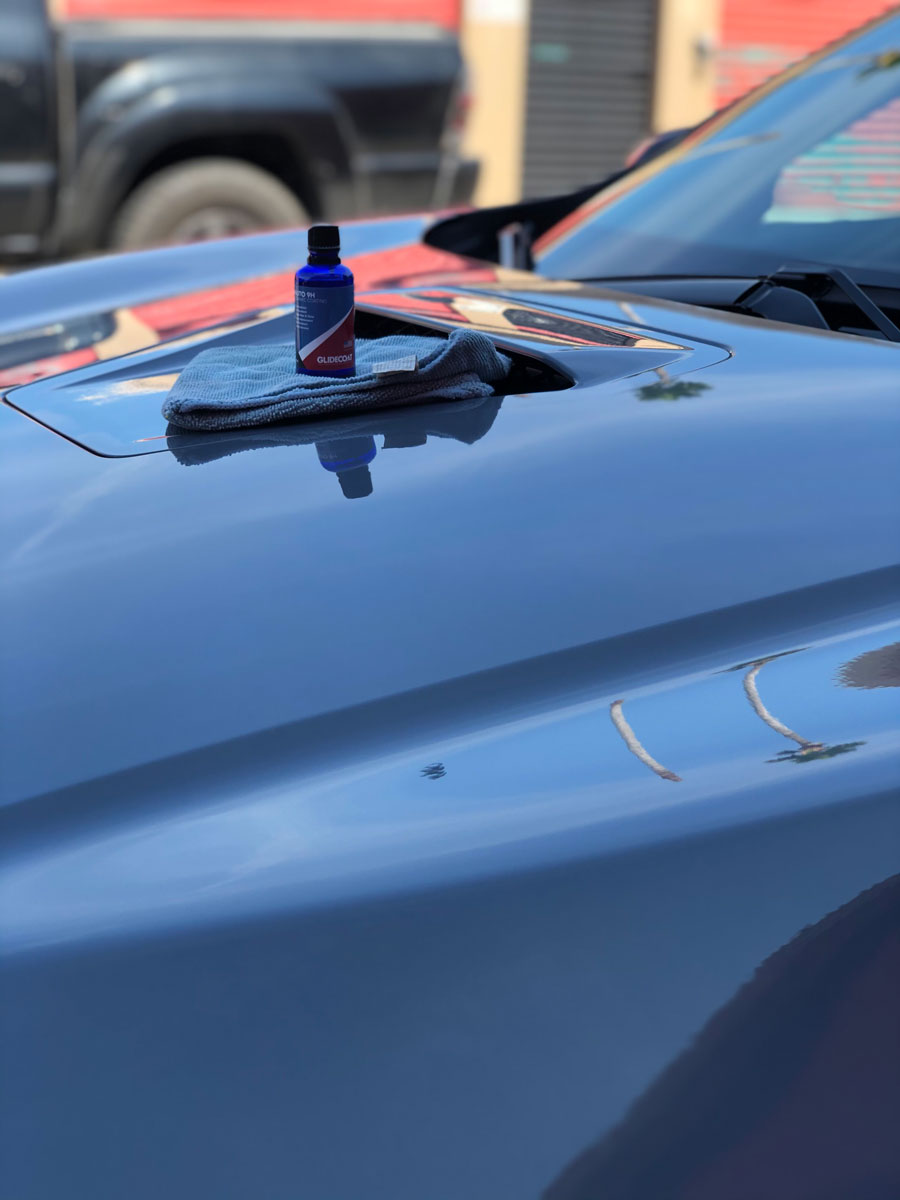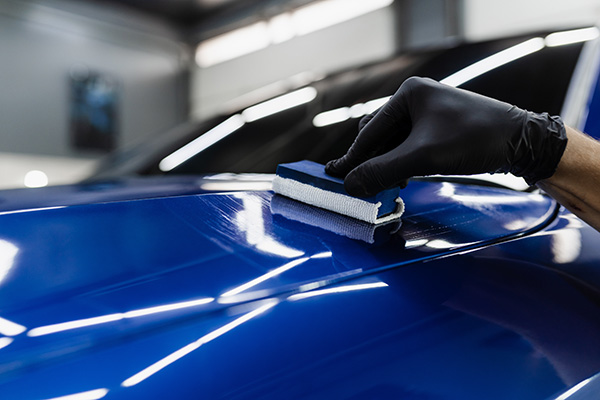Why Choosing Ceramic Coating Can Protect Your Car's End up Long-Term
Why Choosing Ceramic Coating Can Protect Your Car's End up Long-Term
Blog Article
The Duty of Ceramic Finish in Shielding Your Car's Paint From Environmental Damages
Ceramic covering has actually emerged as an advanced option for car proprietors seeking to preserve the stability of their vehicle's outside. By establishing a durable chemical bond with the paint, this innovative technology provides a powerful obstacle versus various ecological hazards, such as UV rays, acid rain, and impurities. However, comprehending the thorough advantages and the complexities of the application process is crucial for maximizing its efficiency. As we explore the nuances of ceramic covering, it ends up being obvious that the option to execute this protective action can substantially influence your car's durability and visual.
What Is Ceramic Layer?
Ceramic finish is an innovative liquid polymer put on the exterior surface areas of a car, created to give a sturdy layer of security for the paint. This ingenious service forms a chemical bond with the vehicle's manufacturing facility paint, developing a resilient and hydrophobic shield. The layer includes nanoparticles that complete the microscopic blemishes in the paint, causing a smooth surface area that improves beam and gloss.
Usually, ceramic finishings are available in various solutions, permitting various levels of security and durability. While some products can last for numerous months, others offer defense for a number of years, depending on the thickness of the application and environmental factors. The application procedure calls for meticulous preparation, consisting of washing, decontaminating, and polishing the vehicle's surface area to ensure optimum bond of the finish.

Advantages of Ceramic Finish
Among the main advantages of applying a ceramic coating is the outstanding defense it uses to automobile paint. This advanced finish develops a durable layer that shields the automobile's surface from a range of environmental risks, including UV rays, acid rain, bird droppings, and tree sap. By providing this robust protection, ceramic coatings significantly lower the risk of fading and etching, preserving the auto's visual allure in time.
In addition to protection, ceramic coatings are renowned for their hydrophobic buildings, which repel water and dust, making it less complicated to keep a clean vehicle. This self-cleaning effect lowers the regularity of washing, conserving both time and resources. Ceramic layers improve the deepness of the paint's gloss, resulting in a refined and dynamic look that raises the total appearance of the lorry.
Another significant benefit is the longevity of ceramic finishes. Unlike typical waxes or sealers that call for frequent reapplication, ceramic coverings can last numerous years, using a cost-efficient option for auto proprietors seeking long-lasting protection. Generally, purchasing ceramic finish results in boosted toughness, minimized maintenance, and sustained visual charm for automotive paint.
Exactly How Ceramic Layer Works
A ceramic finish runs with a chemical bonding process that develops a safety layer on the car's paint surface area. This cutting-edge option makes use of advanced nanotechnology, where microscopic particles of silica are put on hold in a fluid type - ceramic coating. Upon application, these fragments bond with the factory paint, forming a hydrophobic and resilient layer that improves the car's surface area
The main part of Bonuses ceramic finishings, silicon dioxide (SiO2), adds to the covering's stamina and strength. When treated, the coating changes into a difficult, glass-like surface that guards the paint from ecological contaminants such as dust, UV rays, bird droppings, and tree sap. This molecular bond leads to a surface that is not just immune to scrapes however likewise simpler to cleanse, as dirt and grime are less likely to adhere.
Additionally, the hydrophobic properties of ceramic finishes create water to grain and slide off, decreasing the chances of water spots and mineral down payments. This protective barrier efficiently prolongs the life of the paint and keeps the automobile's visual allure, offering auto owners a long-lasting remedy for paint protection.
Application Process of Ceramic Finishing
When taking into consideration the application of ceramic layer, preparation is essential to attaining optimum outcomes. The very first step entails extensively cleaning the vehicle to eliminate dirt, grime, and pollutants from the surface area. This typically includes a purification process utilizing clay bars or chemical cleaners to guarantee the paint is perfectly tidy. Any kind of imperfections or scrapes should be attended to at this stage, as the coating will bond with the surface area below.

Ceramic finish is after that applied in tiny areas, generally making use of an applicator pad. The lorry must be left to cure in a controlled atmosphere to enable the coating to completely bond with the paint.
Long-Term Upkeep and Care
Attaining a successful ceramic covering application sets the foundation for long-term defense, but appropriate maintenance is vital to preserving its advantages. Routine washing is necessary; using a pH-neutral car shampoo will certainly help keep the finish's stability without causing damages. Avoid automated auto cleans that use rough materials, as they can endanger the coating's surface.

Moreover, using a ceramic coating maintenance spray can enhance the existing layer, offering an added boost in defense and shine. It's recommended to execute this every 3 to six months, relying on environmental exposure.
Last but not least, auto parking in shaded areas or using auto covers can stop long term direct exposure to hazardous UV rays and environmental impurities, further prolonging the life of your ceramic coating. By adhering to these upkeep practices, you can guarantee your vehicle's coating stays secured and aesthetically appealing for several years to find.
Verdict
In recap, ceramic finish acts as an essential protective step for auto paint, effectively protecting automobiles from an array of ecological dangers. Its capacity to create a robust hydrophobic barrier not just boosts aesthetic charm yet additionally significantly reduces the frequency and intensity of maintenance needed. The lasting nature of this innovative polymer underscores its worth in maintaining lorry integrity and look, ultimately adding to a more resilient and visually attractive auto coating.
Ceramic finish is an innovative fluid polymer applied to the external surfaces of a lorry, designed to provide a resilient layer of security for the paint. Ceramic finishes improve the depth of the paint's gloss, resulting in a refined and vibrant look that raises the total look of the vehicle.
A ceramic finishing operates via a chemical bonding Get More Information process that creates a protective layer on the lorry's paint surface area.The primary component of ceramic layers, silicon dioxide (SiO2), adds to the finishing's stamina and durability.In summary, ceramic covering offers as a vital protective measure for automotive paint, successfully securing cars from a range of ecological hazards.
Report this page